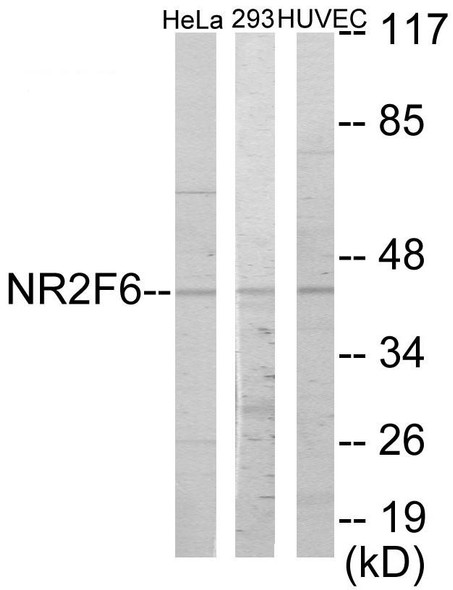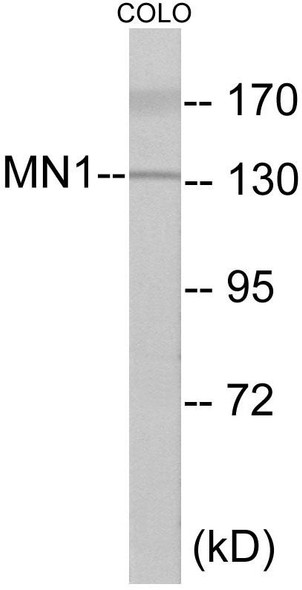Description
BRD3 Colorimetric Cell-Based ELISA
The BRD3 Colorimetric Cell Based ELISA Kit is specifically designed for the quantitative detection of BRD3 levels in cell lysates and tissue homogenates. This kit offers high sensitivity and specificity, providing accurate and reliable results for researchers studying the role of BRD3 in various biological processes.BRD3 is a key protein involved in epigenetic regulation and gene expression, making it a valuable target for studying cell differentiation, proliferation, and development.
Dysregulation of BRD3 has been implicated in various diseases, including cancer and inflammatory disorders, highlighting its significance as a potential therapeutic target.With easy-to-follow protocols and all necessary reagents included, the BRD3 Colorimetric Cell Based ELISA Kit is an essential tool for researchers looking to explore the functions and mechanisms of BRD3 in cellular pathways. Get reliable and reproducible results with this innovative kit from Assay Genie.
| Product Name: | BRD3 Colorimetric Cell-Based ELISA |
| Product Code: | CBCAB01104 |
| ELISA Type: | Cell-Based |
| Target: | BRD3 |
| Reactivity: | Human, Mouse |
| Dynamic Range: | > 5000 Cells |
| Detection Method: | Colorimetric 450 nmStorage/Stability:4°C/6 Months |
| Format: | 96-Well Microplate |
The BRD3 Colorimetric Cell-Based ELISA Kit is a convenient, lysate-free, high throughput and sensitive assay kit that can detect BRD3 protein expression profile in cells. The kit can be used for measuring the relative amounts of BRD3 in cultured cells as well as screening for the effects that various treatments, inhibitors (ie siRNA or chemicals), or activators have on BRD3.
Qualitative determination of BRD3 concentration is achieved by an indirect ELISA format. In essence, BRD3 is captured by BRD3-specific primary antibodies while the HRP-conjugated secondary antibodies bind the Fc region of the primary antibody. Through this binding, the HRP enzyme conjugated to the secondary antibody can catalyze a colorimetric reaction upon substrate addition. Due to the qualitative nature of the Cell-Based ELISA, multiple normalization methods are needed:
| 1. | A monoclonal antibody specific for human GAPDH is included to serve as an internal positive control in normalizing the target absorbance values. |
| 2. | Following the colorimetric measurement of HRP activity via substrate addition, the Crystal Violet whole-cell staining method may be used to determine cell density. After staining, the results can be analysed by normalizing the absorbance values to cell amounts, by which the plating difference can be adjusted. |
| Database Information: | Gene ID: 8019, UniProt ID: Q15059, OMIM: 601541, Unigene: Hs.522472/Hs.654869 |
| Gene Symbol: | BRD3 |
| Sub Type: | None |
| UniProt Protein Function: | BRD3: Binds hyperacetylated chromatin and plays a role in the regulation of transcription, probably by chromatin remodeling and interaction with transcription factors. Regulates transcription by promoting the binding of the transcription factor GATA1 to its targets. Regulates transcription of the CCND1 gene. A chromosomal aberration involving BRD3 is found in a rare, aggressive, and lethal carcinoma arising in midline organs of young people. Translocation t(15;9)(q14;q34) with NUT which produces a BRD3-NUT fusion protein. 2 isoforms of the human protein are produced by alternative splicing. |
| UniProt Protein Details: | Protein type:Protein kinase, Ser/Thr (non-receptor); Kinase, protein; Protein kinase, atypical; ATYPICAL group; BRD family Chromosomal Location of Human Ortholog: 9q34 Molecular Function:chromatin binding; protein binding Biological Process: regulation of transcription from RNA polymerase II promoter |
| NCBI Summary: | This gene was identified based on its homology to the gene encoding the RING3 protein, a serine/threonine kinase. The gene localizes to 9q34, a region which contains several major histocompatibility complex (MHC) genes. The function of the encoded protein is not known. [provided by RefSeq, Jul 2008] |
| UniProt Code: | Q15059 |
| NCBI GenInfo Identifier: | 12643726 |
| NCBI Gene ID: | 8019 |
| NCBI Accession: | Q15059.1 |
| UniProt Secondary Accession: | Q15059,Q4G5Y3, Q5T1R7, Q8N5M3, Q92645, B1APD9, |
| UniProt Related Accession: | Q15059 |
| Molecular Weight: | 60,942 Da |
| NCBI Full Name: | Bromodomain-containing protein 3 |
| NCBI Synonym Full Names: | bromodomain containing 3 |
| NCBI Official Symbol: | BRD3 |
| NCBI Official Synonym Symbols: | ORFX; RING3L |
| NCBI Protein Information: | bromodomain-containing protein 3 |
| UniProt Protein Name: | Bromodomain-containing protein 3 |
| UniProt Synonym Protein Names: | RING3-like protein |
| Protein Family: | Bromodomain-containing protein |
| UniProt Gene Name: | BRD3 |
| UniProt Entry Name: | BRD3_HUMAN |
| Component | Quantity |
| 96-Well Cell Culture Clear-Bottom Microplate | 2 plates |
| 10X TBS | 24 mL |
| Quenching Buffer | 24 mL |
| Blocking Buffer | 50 mL |
| 15X Wash Buffer | 50 mL |
| Primary Antibody Diluent | 12 mL |
| 100x Anti-Phospho Target Antibody | 60 µL |
| 100x Anti-Target Antibody | 60 µL |
| Anti-GAPDH Antibody | 60 µL |
| HRP-Conjugated Anti-Rabbit IgG Antibody | 12 mL |
| HRP-Conjugated Anti-Mouse IgG Antibody | 12 mL |
| SDS Solution | 12 mL |
| Stop Solution | 24 mL |
| Ready-to-Use Substrate | 12 mL |
| Crystal Violet Solution | 12 mL |
| Adhesive Plate Seals | 2 seals |
The following materials and/or equipment are NOT provided in this kit but are necessary to successfully conduct the experiment:
- Microplate reader able to measure absorbance at 450 nm and/or 595 nm for Crystal Violet Cell Staining (Optional)
- Micropipettes with capability of measuring volumes ranging from 1 µL to 1 ml
- 37% formaldehyde (Sigma Cat# F-8775) or formaldehyde from other sources
- Squirt bottle, manifold dispenser, multichannel pipette reservoir or automated microplate washer
- Graph paper or computer software capable of generating or displaying logarithmic functions
- Absorbent papers or vacuum aspirator
- Test tubes or microfuge tubes capable of storing ≥1 ml
- Poly-L-Lysine (Sigma Cat# P4832 for suspension cells)
- Orbital shaker (optional)
- Deionized or sterile water
*Note: Protocols are specific to each batch/lot. For the correct instructions please follow the protocol included in your kit.
| Step | Procedure |
| 1. | Seed 200 µL of 20,000 adherent cells in culture medium in each well of a 96-well plate. The plates included in the kit are sterile and treated for cell culture. For suspension cells and loosely attached cells, coat the plates with 100 µL of 10 µg/ml Poly-L-Lysine (not included) to each well of a 96-well plate for 30 minutes at 37°C prior to adding cells. |
| 2. | Incubate the cells for overnight at 37°C, 5% CO2. |
| 3. | Treat the cells as desired. |
| 4. | Remove the cell culture medium and rinse with 200 µL of 1x TBS, twice. |
| 5. | Fix the cells by incubating with 100 µL of Fixing Solution for 20 minutes at room temperature. The 4% formaldehyde is used for adherent cells and 8% formaldehyde is used for suspension cells and loosely attached cells. |
| 6. | Remove the Fixing Solution and wash the plate 3 times with 200 µL 1x Wash Buffer for five minutes each time with gentle shaking on the orbital shaker. The plate can be stored at 4°C for a week. |
| 7. | Add 100 µL of Quenching Buffer and incubate for 20 minutes at room temperature. |
| 8. | Wash the plate 3 times with 1x Wash Buffer for 5 minutes each time. |
| 9. | Add 200 µL of Blocking Buffer and incubate for 1 hour at room temperature. |
| 10. | Wash 3 times with 200 µL of 1x Wash Buffer for 5 minutes each time. |
| 11. | Add 50 µL of 1x primary antibodies (Anti-BRD3 Antibody and/or Anti-GAPDH Antibody) to the corresponding wells, cover with Parafilm and incubate for 16 hours (overnight) at 4°C. If the target expression is known to be high, incubate for 2 hours at room temperature. |
| 12. | Wash 3 times with 200 µL of 1x Wash Buffer for 5 minutes each time. |
| 13. | Add 50 µL of 1x secondary antibodies (HRP-Conjugated AntiRabbit IgG Antibody or HRP-Conjugated Anti-Mouse IgG Antibody) to corresponding wells and incubate for 1.5 hours at room temperature. |
| 14. | Wash 3 times with 200 µL of 1x Wash Buffer for 5 minutes each time. |
| 15. | Add 50 µL of Ready-to-Use Substrate to each well and incubate for 30 minutes at room temperature in the dark. |
| 16. | Add 50 µL of Stop Solution to each well and read OD at 450 nm immediately using the microplate reader. |
(Additional Crystal Violet staining may be performed if desired – details of this may be found in the kit technical manual.)






